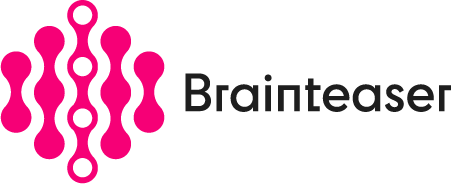Public Deliverables
This section contains all public deliverables produced by the project.
Health / medical perspective
See all public deliverables
D9.1: Project ontology and terminology, including data mapper and RDF graph builder
It documents the design and development of the first version of the Brainteaser Ontology (BO) focused, in particular, on retrospective data for Amyotrophic Lateral Sclerosis (ALS) and Multiple Sclerosis (MS).
The BO is innovative since it relies on very few seed concepts – Patient, Clinical Trial, Disease, Event – which allow us to jointly model ALS and MS and to grasp the time dimension entailed by the progression of such diseases.
D9.2 Project Ontology and Terminology, Including Data Mapper and RDF Graph Builder
Ths deliverable documents the design and development of the second version of BRAINTEASER Ontology (BTO), the ontology developed in the context of BRAINTEASER project, to provide a unifying data structure and ontologically model clinical data concerning patients affected by Amyotrophic Lateral Sclerosis (ALS) and Multiple Sclerosis (MS).
D9.3 Project Ontology and Terminology, Including Data Mapper and RDF Graph Builder
This deliverable documents the design and development of the third version of BRAINTEASER Ontology (BTO), the ontology developed in the context of BRAINTEASER project, to provide a unifying data structure and ontologically model clinical data concerning patients affected by Amyotrophic Lateral Sclerosis (ALS) and Multiple Sclerosis (MS).
D9.4 Shared data package for the evaluation challenge and integration with EOSC
This deliverable presents the steps we undertook to ingest, process, analyse and prepare the training and testing datasets for the Intelligent Disease Progression Prediction (iDPP) lab at CLEF 2022.
D9.5 Shared Data Package for the Evaluation Challenge and Integration with EOSC
This deliverable presents the steps we undertook to ingest, process, analyse and prepare the training and testing datasets for the Intelligent Disease Progression Prediction (iDPP) lab at CLEF 2023.
D9.6 Shared data package for the evaluation challenge and integration with EOSC
This deliverable details the steps we took to ingest, process, analyze, and prepare the training and testing datasets for the Intelligent Disease Progression Prediction (iDPP) lab at CLEF 2024.
D9.7 Evaluation Challenge: Report on the Analysis of the Experimental Results, Proceedings, and Integration with EOSC
This deliverable describes iDPP@CLEF 2022 (Intelligent Disease Progression Prediction at CLEF), the challenge organized by the BRAINTEASER project to promote the comparative evaluation of AI algorithms for the prediction of the progression of Amyotrophic Lateral Sclerosis (ALS).
D9.8 Evaluation challenge: report on the analysis of the experimental results, proceedings, and integration with EOSC
This deliverable describes iDPP@CLEF 2023 tasks, introduces the provided dataset and the participants, describes the proposed approachess and finally draws some conclusions and outlooks some future work.
D9.9 Evaluation Challenge: Report on the analysis of the experimental results, proceedings, and integration with EOSC
This deliverable describes iDPP@CLEF 2024 tasks, introduces the provided dataset and the participants, describes the proposed approachess and finally draws some conclusions and outlooks some future work.
D10.1: DC&SE Strategy and Plan
It provides an in dept overview of the Dissemination, Communication and Stakeholder Engagement actions that BRAINTEASER will implement in its work packages. The document outlines plans, objectives, methods and tools to be implemented and a practical guideline to ensure a smooth interaction between the project’s dissemination team and the rest of partners.
The plan must be seen as a living document and, as such, will be revised twice during the lifetime of the project to align the DC&SE strategy with BRAINTEASER results and achievements.
D10.2 DC&SE Strategy & Plan
This plan aims to develop a feasible strategy with related methodologies to carry out appropriate and effective communication and dissemination actions, with the aim of maximising the impact of the BRAINTEASER project.
D10.3 DC&SE Strategy & Plan
This final version of the BRAINTEASER Dissemination and Communication Plan outlines a comprehensive strategy and methodologies to effectively carry out communication and dissemination activities, aiming to consolidate the project’s overall impact beyond
its duration.
D10.4: Visual identity, website and communication package
The project’s initial communication package, consisting of the project branding and graphic identity, website and social media channels, flyer and poster, banners and visuals is here presented. Work documents templates made available to consortium partners to assure a homogeneous approach in the preparation of presentations and text documents are, also, here included.
D10.5: DC&SE Report
The present report aims to track progress made with dissemination, communications and stakeholders’ engagement (DC&SE) actions during the first year of the project. It documents actions recommended and/or guided by the first release of the project’s DC&SE Strategy and Plan. All the activities undertaken in this context are here addressed as well as challenges, risks, means of mitigation, and lessons learned from such actions.
D10.6 DC&SE report
The present report tracks progress made with dissemination, communications and stakeholders’ engagement (DC&SE) actions during the second year of the project (1st January 2022 – 31st December 2022) to maximise BRAINTEASER’s impact so far.
D10.7 DC&SE Report
The present report aims to track progress made with dissemination, communication and stakeholder engagement (DC&SE) actions during the third year of the project (1st January 2023 – 31st December 2023) to maximise BRAINTEASER’s impact.
D10.9 Liaison and coordination activities report
This document outlines the activities of alignment of BRAINTEASER with other EU and non-EU initiatives with similar or complementary objectives carried out by the European Brain Council (EBC).
D10.10 Exploitation Plan (M24)
This first version of the Exploitation Plan contains a description of the solutions developed so far within the project and potential business contexts-of-use, in terms of technical features and indication of target users; followed by a through market analysis focusing on Amyotrophic Lateral Sclerosis and Multiple Sclerosis diseases, Medical Simulation solutions, and Wearable Healthcare Technology; and finally a preliminary exploitation strategy including a business model canvas, sustainability plans, and aspects concerning certification and Intellectual Property Rights protection.
